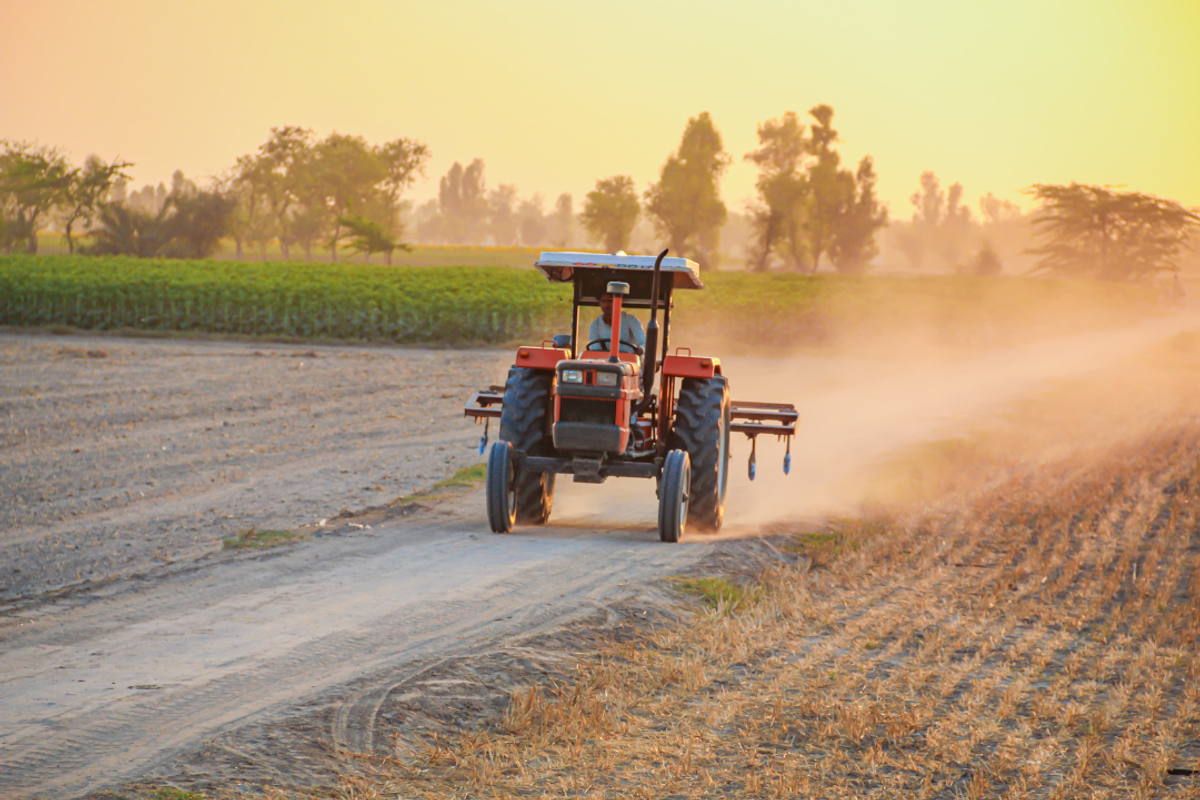Pakistan’s agriculture growth stalls at 0.56% amid climate shocks, high costs
Livestock and fisheries provide buffer as crop output plummets; food import reliance grows
Business Desk
The Business Desk tracks economic trends, market movements, and business developments, offering analysis of both local and global financial news.

Pakistan’s agriculture sector recorded meager growth of 0.56% in the first nine months of fiscal year 2025, falling below historical averages as extreme weather and economic pressures hampered production, according to Economic Survey of Pakistan issued Monday
The sector, which employs nearly 40% of the country’s workforce, faced significant setbacks in key crops, though livestock, fisheries, and forestry provided some resilience. Meanwhile, rising input costs and import dependency for essential commodities like edible oil underscored structural challenges.
Crop Sector Contraction
The crop sector, traditionally the backbone of agricultural growth, contracted by 6.82% in FY25, dragged down by a 13.49% decline in major crops such as wheat, rice, and sugarcane, and a 19.03% drop in cotton ginning.
However, other crops—including fruits, vegetables, and pulses—posted 4.78% growth, signaling potential for diversification.
Livestock, which accounts for over 60% of agricultural GDP, expanded by 4.72%, while fisheries grew by 1.42% and forestry by 3.03%. Despite these gains, the overall sector growth remained weak due to poor crop performance.
Fertilizer Use Plummets as Farmers Grapple with High Costs
Fertilizer offtake dropped sharply by 14.1% year-on-year to 3.4 million tonnes, as soaring prices and low crop returns discouraged farmers from investing in inputs. Analysts warn that reduced fertilizer application could further threaten future yields unless affordability improves.
Edible Oil Imports Highlight Food Security Concerns
Pakistan’s edible oil supply remained heavily import-dependent, with foreign shipments making up 79% of the 3.07 million tonnes available in FY25. Imports, valued at $2.75 billion, strained foreign reserves, while domestic production inched up to 486,000 tonnes. Experts urge greater investment in oilseed cultivation to curb reliance on imports.
Dairy and Meat Production Rise, Poultry Leads Growth
Milk production grew 3.2% to 72.34 million tonnes, with buffalo milk contributing the largest share (43.13 million tonnes). Meat output increased by 2.7%, led by a 9.4% surge in poultry production—now at 2.58 million tonnes—as consumers shifted toward more affordable protein sources.
Fisheries Exports Surge Amid Global Demand
Fish production jumped 36%, driven by a 55.3% rise in marine catches. Exports reached 152.6 million metric tonnes, earning $318.9 million, with key markets including China, Thailand, and the European Union.
Agricultural Credit Disbursement Up, But Challenges Linger
Farm credit disbursement rose 15% to 1.88 trillion Pakistani rupees ($6.75 billion), though it covered only 73% of the annual target. Smallholders still face barriers in accessing financing, high-quality seeds, and mechanization.
Government Measures Aim to Stabilize Sector
Officials have introduced incentives for the upcoming Kharif season, including expanded credit programs and seed reforms. However, long-term solutions—such as irrigation upgrades, digital farming tools, and stronger R&D—are needed to ensure sustainable growth.
“The sector has shown resilience, but systemic reforms are critical to reduce vulnerabilities,” said an agriculture ministry spokesperson. “We must modernize to meet both domestic needs and export potential.”
As climate volatility and economic pressures persist, Pakistan’s agriculture sector remains at a crossroads, balancing short-term recovery with the need for deeper transformation.










Comments
See what people are discussing